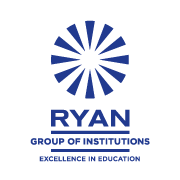In the foundational years of a child’s life, early education plays a crucial role, laying the groundwork for future academic and personal success. In this phase of learning that goes far beyond acquiring basic literacy and numeracy skills; “Critical Thinking Development” stands as a key focus. it’s about shaping the young minds to think independently and creatively. Among the various competencies that early education seeks to instill, critical thinking stands out as a cornerstone. It’s not merely a skill but an indispensable asset in a child’s cognitive toolkit, one that will serve them well throughout their lives.
The term ‘critical thinking’ often conjures up images of older students engaged in complex problem-solving, but its roots extend deep into early childhood. At this tender age, children are naturally curious, questioning everything around them, a trait that, if nurtured correctly, becomes the bedrock of critical thinking. However, one of the challenges educators and parents face is keeping the lessons engaging and far from dull. The antidote to monotony in education lies in incorporating certain boosters that transform the learning landscape.
Today we will discuss the four dynamic and effective strategies or ‘boosters’ for Critical Thinking Development that can revolutionize early education. These methods are not just about conveying information but are designed to actively engage young minds, prompting them to question, analyze, and synthesize information. By integrating these boosters into early education, we can ensure that our lessons are not just informative but also exciting and thought-provoking, paving the way for the robust development of critical thinking skills in young learners.
As we navigate through these strategies, we need to remember that the goal is not just to teach children what to think but more importantly, how to think.
Interactive Environments for Critical Thinking Development

Have you ever thought about what makes a classroom more than just a room with desks and a chalkboard? It’s when that room turns into a space where kids can actually interact and engage with what they’re learning. That’s the idea behind interactive learning environments, and it’s a pretty big deal for encouraging critical thinking in kids.
Interactive learning environments can increase student engagement by up to 48%? It turns the learning process into an exciting exploration.Let’s break it down a bit. In these interactive spaces, learning isn’t just about listening and taking notes. It’s about doing things. Think about kids working together to solve a puzzle or build a model. Children are not just passively taking in information; they’re actively involved. They’re asking questions, trying out ideas, maybe even making a few mistakes along the way. And that’s okay because that’s how they learn best.
This approach to critical thinking development is so powerful because it taps into kids’ natural curiosity. You know how kids are always asking ‘why’ and ‘how’? Interactive learning environments feed into that curiosity. They give kids a chance to explore and figure things out for themselves so it goes beyond memorizing facts; it’s about understanding concepts.
And it’s not just about the fancy stuff – the latest tech or gadgets. It’s more about how we, as adults – whether we’re teachers or parents – support these experiences. It’s about guiding them, asking them open-ended questions, and letting them find their own answers. It’s about creating a learning experience that feels engaging and, yes, even a bit fun.
Questioning as a Tool for Critical Thinking Development

Albert Einstein once said,
The important thing is not to stop questioning. Curiosity has its own reason for existing.
So, let’s talk about the power of questions. You know how kids are naturally curious, always asking ‘why’ this and ‘how’ that? Well, that curiosity is a goldmine for learning, especially when it comes to developing critical thinking. This is where questioning and inquiry-based learning come into play.
Inquiry-based learning is all about encouraging kids to ask questions and then explore the answers. It’s not about feeding them information; it’s about guiding them on a journey to discover it for themselves. When kids ask questions, they’re engaged. They’re thinking, connecting dots, and really getting to grips with concepts.
For example, instead of just teaching kids about the water cycle in a standard lesson, why not start with a question like, “Where does rain come from?” This simple question can lead to experiments, discussions, and even more questions. It’s a way of learning that makes kids active participants, not just passive receivers of information.
This fantastic approach respects and utilizes the natural curiosity of children as they’re allowed to ask questions and seek answers and while doing so they’re learning how to think critically. They’re not just memorizing facts; they’re learning how to learn. And isn’t that the ultimate goal of education?
But here’s the catch – critical thinking development requires a bit of a shift from us as educators and parents. We need to be comfortable with not having all the answers and be open to exploring alongside our kids. It’s about creating an environment where it’s okay to question and where the journey to find an answer is just as important as the answer itself.
Integration of Technology and Education
In this digital age, it’s hard to talk about education without mentioning technology. But it’s not just about using technology for the sake of it. It’s about how we can smartly integrate it into learning to really boost critical thinking in kids.
Think about it: technology offers a vast array of tools that can make learning more interactive and engaging. Some educational apps and games can turn complex concepts into interactive challenges. Kids might not even realize they’re learning because they’re too busy enjoying the game. And that’s the beauty of it – learning becomes something they want to do, not something they have to do.
But it’s not all about fun and games. Technology can also provide access to a world of information. Kids can go on virtual field trips, watch educational videos, or even collaborate with students from across the globe. It opens up opportunities that were unimaginable just a few years ago.
However, it’s important to strike a balance. Technology should be a tool, not a crutch. It’s about using it in a way that enhances learning, not replaces traditional methods. The key is to use technology to create experiences that encourage kids to think, question, and explore.
Using an app to explore the solar system can turn a standard astronomy lesson into an interactive experience. Kids can navigate through space, learn about each planet, and see things in a way a textbook just can’t provide. It’s about bringing learning to life and making it relevant to the world they live in.
By thoughtfully integrating technology into education, we’re not just teaching kids how to use gadgets; we’re teaching them to use these tools to think critically and solve problems. In a world where technology is everywhere, these are skills that will serve them well into the future.
Encouraging Collaborative learning
lastly, let’s not underestimate the power of collaborative learning. It’s all about getting kids to work together, share ideas, and learn from each other. This collaboration is a fantastic way to develop critical thinking skills because it exposes children to different perspectives and ways of solving problems.
Collaborative learning can take many forms as a group project, a classroom discussion, or even a game where kids need to work together to achieve a goal. The idea is to create opportunities for kids to communicate, negotiate, and make decisions together. This interaction is crucial for critical thinking development because it teaches them to consider other viewpoints, articulate their own ideas, and find common ground.
For example, during a group science project, kids might have different opinions on how to conduct an experiment. This is a perfect opportunity for them to discuss, debate, and eventually agree on a method. Through this process, they’re not just learning about science; they’re learning valuable life skills like teamwork, communication, and, of course, critical thinking development.
What’s important here is the role of the teacher or parent. Our job isn’t to provide all the answers but to facilitate these interactions. It’s about guiding the conversation, asking the right questions, and sometimes just stepping back and letting the kids figure it out.
By promoting collaborative learning, we’re preparing our kids for the real world. In almost every aspect of life, whether it’s at work or in personal relationships, being able to work with others, understand different viewpoints, and come up with solutions together is invaluable. And if we can start developing these skills from an early age, we’re giving our kids a solid foundation for success.




